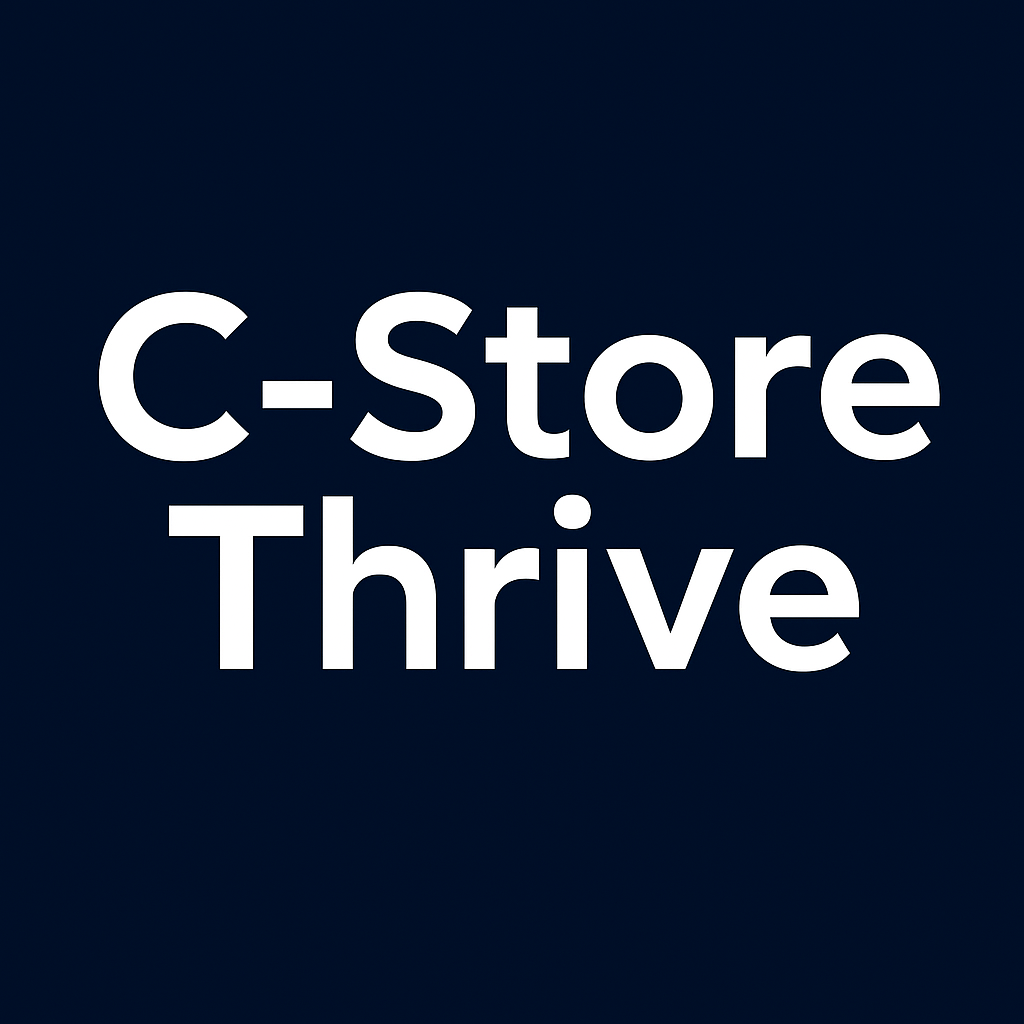The Difference Between Product Assortment and Product Mix
Product assortment refers to the total variety of products your store offers, while product mix focuses on strategic composition and proportional balance. Understanding these concepts helps independent C-stores optimize their 3,000-5,000 SKUs for maximum profit and customer satisfaction.

For independent convenience store owners, the terms "product assortment" and "product mix" are often used interchangeably—but understanding their distinct meanings and strategic applications is crucial for optimizing inventory, maximizing profits, and building customer loyalty. Here's how these fundamental retail concepts directly impact your bottom line.
The convenience store industry operates in a unique retail environment where space is limited, customer visits are brief, and every square foot must generate maximum return. With the average C-store carrying 3,000-5,000 SKUs across multiple categories, independent owners must make strategic decisions about what to stock and how to organize it. Yet many operators approach their inventory decisions without understanding the critical difference between product assortment and product mix—a knowledge gap that can cost thousands in lost revenue annually.
The stakes are particularly high for independent operators who compete against well-funded chains with sophisticated inventory management systems. While chains rely on corporate planograms and centralized buying power, independent stores have the agility to customize their product strategies for local markets—if they understand how to leverage assortment and mix principles strategically.
Defining the Terms: More Than Semantics
Product Assortment: The Complete Picture
Product assortment refers to the total variety of products and services that your store offers to customers. It's essentially your complete catalog—everything available for purchase in your store, from candy bars to car supplies. Think of it as the breadth and depth of your entire inventory universe.
For convenience stores, product assortment encompasses:
- All product categories you carry (beverages, snacks, automotive, etc.)
- Every brand within each category
- All size variations and package options
- Seasonal and limited-time offerings
- Services like lottery, money orders, and bill payments
Product Mix: The Strategic Balance
Product mix, while related to assortment, focuses specifically on the strategic composition and proportional balance of products within your store. It's about how much space, investment, and attention you allocate to different categories and items relative to each other.
Product mix considers:
- What percentage of your space each category occupies
- How you balance high-margin versus high-volume products
- The relationship between different product lines
- Seasonal adjustments and promotional emphasis
- Financial investment allocation across categories
The Four Dimensions: Understanding Assortment Architecture
Breadth (Width): Category Coverage
Breadth refers to how many different product categories your store carries. A store with wide breadth offers many different types of products, while narrow breadth focuses on fewer categories.
Wide Breadth C-Store Example:
- Beverages, snacks, tobacco, automotive, personal care, grocery items, prepared foods, general merchandise, lottery, and services
- Advantage: Attracts diverse customer segments and increases traffic
- Challenge: Requires more supplier relationships and inventory investment
Narrow Breadth C-Store Example:
- Focuses primarily on beverages, snacks, and tobacco with limited other categories
- Advantage: Simplified operations and supplier management
- Challenge: May lose customers seeking one-stop convenience
Length (Depth): Variety Within Categories
Length measures how many different options you offer within each product category. Deep assortment provides many choices within categories, while shallow assortment offers fewer options.
Deep Assortment Example - Beverages:
- 15 soda brands, 8 energy drink varieties, 12 water options, 6 juice brands, 10 sports drink flavors
- Advantage: Satisfies diverse preferences and captures more sales within category
- Challenge: Higher inventory costs and complexity
Shallow Assortment Example - Beverages:
- 3 major soda brands, 2 energy drinks, 3 water options, 2 juice brands
- Advantage: Lower inventory investment and faster turnover
- Challenge: May lose customers seeking specific preferences
Depth: Variations Within Products
Depth refers to how many variations of specific products you carry. This includes different sizes, flavors, packages, and price points for individual items.
High Depth Example - Coca-Cola:
- 12 oz cans, 20 oz bottles, 2-liter bottles, 6-packs, 12-packs
- Regular, Diet, Zero, Cherry, Vanilla varieties
- Advantage: Captures different usage occasions and price sensitivities
- Challenge: Significant shelf space and inventory investment
Consistency: Product Relationship Logic
Consistency measures how closely related your product offerings are to each other and your store's primary mission. High consistency means products complement each other and serve similar customer needs.
High Consistency C-Store:
- Focuses on grab-and-go convenience items that complement each other
- Clear relationship between categories (beverages pair with snacks)
- Advantage: Clear brand positioning and cross-selling opportunities
Lower Consistency C-Store:
- Carries unrelated items like convenience goods, automotive supplies, and home improvement tools
- Advantage: Potential for higher margins in specialty categories
- Challenge: Confusing brand identity and complex operations
Strategic Applications for Independent Operators
The C-Store Assortment Dilemma
Independent convenience stores face unique constraints that make assortment decisions particularly challenging:
Space Limitations: Average C-store size of 2,400 square feet requires strategic choices about breadth versus depth
Capital Constraints: Limited working capital means every inventory dollar must work harder
Local Market Factors: Customer demographics and competition vary significantly by location
Operational Complexity: Each additional category requires supplier relationships, staff training, and management attention
Assortment Strategies for Different Store Types
Urban High-Traffic Strategy: Wide Breadth, Moderate Depth
text
Approach: Maximum category coverage with focused depth in high-velocity items
Rationale: Diverse customer base requires variety; fast turnover supports moderate depth
Example: 12 categories with 3-5 key brands per category
Investment: Higher initial inventory, faster turnover, diverse supplier base
Suburban Family Strategy: Moderate Breadth, High Depth in Key Categories
text
Approach: Focus on family-oriented categories with extensive options
Rationale: Customers willing to choose from more options in preferred categories
Example: 8 categories with 8-12 options in beverages, snacks, and household items
Investment: Deeper inventory in proven categories, fewer supplier relationships
Rural/Highway Strategy: Narrow Breadth, Deep Necessity Focus
text
Approach: Essential travel and local needs with comprehensive coverage
Rationale: Customers have limited alternatives and specific need patterns
Example: 6 categories with extensive automotive, beverages, and emergency supplies
Investment: High depth in essential categories, emergency stock capabilities
Product Mix Optimization: The Profit Formula
Revenue-Driven Mix Decisions
Effective product mix balances multiple financial objectives simultaneously:
High-Margin Categories (40-65% margins): Candy, personal care, prepared foods
- Should occupy prime real estate proportional to profit contribution
- Deserve investment in depth and premium positioning
- Require staff training for suggestive selling
High-Volume Categories (15-30% margins): Beverages, basic groceries, tobacco
- Need sufficient space for inventory turnover
- Focus on operational efficiency and availability
- Optimize for convenience and speed
Traffic-Driving Categories: Fuel, lottery, essential groceries
- May operate at lower margins but generate visits
- Support cross-selling to higher-margin categories
- Require consistent availability and competitive positioning
Mix Adjustment Strategies
Seasonal Mix Evolution:
text
Summer Emphasis (May-September):
- Increase cold beverage space allocation by 40%
- Expand ice, automotive cooling, and outdoor supplies
- Reduce hot beverage and comfort food space
Winter Focus (November-March):
- Maximize hot beverage and comfort food space
- Expand automotive winter supplies and emergency items
- Reduce cold beverage and seasonal outdoor space
Holiday Periods:
- Temporarily reallocate space for seasonal high-margin items
- Focus on gift cards, party supplies, and holiday-specific products
- Plan for post-holiday clearance and space reversion
Performance-Based Reallocation:
text
Monthly Review Process:
1. Calculate profit per square foot by category
2. Identify underperforming space allocation
3. Test reallocation in 10-20% increments
4. Monitor customer response and financial impact
5. Adjust based on results and seasonal factors
Technology and Data-Driven Decisions
POS Analytics for Assortment Optimization
Modern point-of-sale systems provide critical data for assortment and mix decisions:
Sales Velocity Analysis: Items sold per day per linear foot of space
Margin Performance: Gross profit contribution by category and item
Customer Behavior: Basket analysis showing product relationships
Seasonal Patterns: Historical trends enabling predictive planning
Key Performance Indicators to Track:
- Revenue per square foot by category
- Inventory turnover rates by product line
- Cross-category purchase patterns
- Customer visit frequency correlation with assortment changes
Vendor Partnership Strategy
Independent stores can leverage vendor expertise while maintaining control:
Category Captains: Allow leading vendors to provide category insights while retaining final decisions
Planogram Services: Use vendor-provided layouts as starting points for local customization
Promotional Support: Coordinate vendor promotions with strategic assortment goals
New Product Testing: Partner with vendors for controlled testing of assortment additions
Common Mistakes and How to Avoid Them
Assortment Pitfalls
Over-Assortment: Carrying too many slow-moving items that tie up capital and space
- Solution: Implement minimum velocity standards for SKU retention
- Metric: Items selling less than 1 unit per week should be evaluated for elimination
Under-Assortment: Too few options causing customer defection
- Solution: Monitor out-of-stock complaints and customer requests
- Metric: Track lost sale incidents and expand where patterns emerge
Inconsistent Assortment: Random product selection without strategic logic
- Solution: Develop clear criteria for category inclusion and product selection
- Framework: Every product should serve a specific customer need or profit objective
Mix Management Errors
Margin Blindness: Allocating space based on sales volume rather than profitability
- Solution: Calculate and optimize based on profit per square foot
- Target: High-margin categories should occupy space proportional to profit contribution
Static Mix: Failing to adjust product mix based on performance and seasons
- Solution: Implement monthly mix review and quarterly reallocation cycles
- Flexibility: Maintain 10-15% of space for testing and seasonal adjustment
Local Disconnection: Copying successful mixes from other markets without local adaptation
- Solution: Analyze local demographics, competition, and customer feedback
- Customization: Adapt 20-30% of mix to local preferences and needs
Building Your Strategic Framework
Assessment Tools
Current State Analysis:
text
Assortment Audit Checklist:
□ Count total SKUs by category
□ Measure space allocation by category
□ Calculate sales per square foot by section
□ Identify slow-moving inventory (< 1 unit/week)
□ Document customer requests for unavailable items
□ Analyze competitor assortments within 2 miles
Mix Optimization Calculator:
text
Profit per Square Foot = Category Gross Profit ÷ Space Occupied
Optimal Space Allocation = (Category Profit % × Total Space) ± Local Factors
Reallocation Priority = (Current Performance - Optimal Performance) × Improvement Potential
Implementation Roadmap
Phase 1: Documentation and Baseline (Weeks 1-2)
- Complete current assortment audit and space measurement
- Establish baseline performance metrics by category
- Document customer feedback and requests
Phase 2: Strategic Planning (Weeks 3-4)
- Define target customer segments and their needs
- Set assortment breadth and depth targets by category
- Plan optimal mix allocation based on profit and customer data
Phase 3: Controlled Testing (Weeks 5-8)
- Implement changes in 25% increments to minimize risk
- Test new products and categories in limited quantities
- Monitor customer response and financial impact
Phase 4: Optimization and Scaling (Weeks 9-12)
- Expand successful changes across full assortment
- Fine-tune mix based on performance data
- Establish ongoing review and adjustment processes
Conclusion: Strategic Advantage Through Understanding
The difference between product assortment and product mix isn't just academic—it's fundamental to independent convenience store success. Assortment decisions determine what you offer; mix decisions determine how profitably you offer it. Master both concepts, and you gain competitive advantages that even well-funded chains struggle to replicate.
Your independence is your strength. While chains are constrained by corporate planograms and standardized approaches, you can customize both assortment and mix to serve your specific market better than any competitor. Use this flexibility strategically, backed by data and guided by customer needs.
Start with your current reality. Audit your existing assortment and mix, identify the biggest opportunities for improvement, and implement changes systematically. Every optimization—whether adding a needed product line or reallocating space to higher-margin categories—compounds to create sustainable competitive advantage.
Remember that both assortment and mix are dynamic strategies, not static decisions. Markets change, customers evolve, and seasons shift. The independent operators who thrive are those who understand these concepts deeply and apply them consistently to create shopping experiences that customers value and profit margins that sustain growth.
Ready to optimize your store's assortment and mix? Begin by analyzing your current performance data, identifying your highest-opportunity categories, and implementing systematic improvements that align product selection with customer needs and business objectives.





